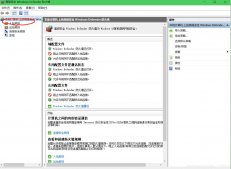本文实例总结了常用SQL语句优化技巧。分享给大家供大家参考,具体如下:
除了建立索引之外,保持良好的SQL语句编写习惯将会降低SQL性能问题发生。
①通过变量的方式来设置参数
好:
|
1
|
stringsql = "select * from people p where p.id = ? "; |
坏:
|
1
|
stringsql = "select * from people p where p.id = "+id; |
数据库的SQL文解析和执行计划会保存在缓存中,但是SQL文只要有变化,就得重新解析。
“…where p.id = ”+id的方式在id值发生改变时需要重新解析,这会耗费时间。
②不要使用select *
好:
|
1
|
stringsql = "select people_name,pepole_age from people "; |
坏:
|
1
|
stringsql = "select * from people "; |
使用select *的话会增加解析的时间,另外会把不需要的数据也给查询出来,数据传输也是耗费时间的,
比如text类型的字段通常用来保存一些内容比较繁杂的东西,如果使用select *则会把该字段也查询出来。
③谨慎使用模糊查询
好:
|
1
|
stringsql = "select * from people p where p.id like 'parm1%' "; |
坏:
|
1
|
stringsql = "select * from people p where p.id like '%parm1%' "; |
当模糊匹配以%开头时,该列索引将失效,若不以%开头,该列索引有效。
④不要使用列号
好:
|
1
|
stringsql = "select people_name,pepole_age from people order by name,age"; |
坏:
|
1
|
stringsql = "select people_name,pepole_age from people order by 6,8"; |
使用列号的话,将会增加不必要的解析时间。
⑤优先使用UNION ALL,避免使用UNION
好:
|
1
|
stringsql = "select name from student union all select name from teacher"; |
坏:
|
1
|
stringsql = "select name from student union select name from teacher"; |
UNION 因为会将各查询子集的记录做比较,故比起UNION ALL ,通常速度都会慢上许多。一般来说,如果使用UNION ALL能满足要求的话,务必使用UNION ALL。还有一种情况,如果业务上能够确保不会出现重复记录。
⑥在where语句或者order by语句中避免对索引字段进行计算操作
好:
|
1
|
stringsql = "select people_name,pepole_age from people where create_date=date1 "; |
坏:
|
1
|
stringsql = "select people_name,pepole_age from people where trunc(create_date)=date1"; |
当在索引列上进行操作之后,索引将会失效。正确做法应该是将值计算好再传入进来。
⑦使用not exist代替not in
好:
|
1
|
stringsql = "select * from orders where customer_name not exist (select customer_name from customer)"; |
坏:
|
1
|
stringsql = "select * from orders where customer_name not in(select customer_name from customer)"; |
如果查询语句使用了not in 那么内外表都进行全表扫描,没有用到索引;而not extsts 的子查询依然能用到表上的索引。
⑧ exist和in的区别
in 是把外表和内表作hash 连接,而exists是对外表作loop循环,每次loop循环再对内表进行查询。因此,in用到的是外表的索引, exists用到的是内表的索引。
如果查询的两个表大小相当,那么用in和exists差别不大。
如果两个表中一个较小,一个是大表,则子查询表大的用exists,子查询表小的用in:
例如:表A(小表),表B(大表)
1:
|
1
|
select * from A where cc in (select cc from B) |
效率低,用到了A表上cc列的索引;
|
1
|
select * from A where exists(select cc from B where cc=A.cc) |
效率高,用到了B表上cc列的索引。
2:
|
1
|
select * from B where cc in (select cc from A) |
效率高,用到了B表上cc列的索引;
|
1
|
select * from B where exists(select cc from A where cc=B.cc) |
效率低,用到了A表上cc列的索引。
⑨避免在索引列上做如下操作:
◆避免在索引字段上使用<>,!=
◆避免在索引列上使用IS NULL和IS NOT NULL
◆避免在索引列上出现数据类型转换(比如某字段是String类型,参数传入时是int类型)
当在索引列上使用如上操作时,索引将会失效,造成全表扫描。
⑩复杂操作可以考虑适当拆成几步
有时候会有通过一个SQL语句来实现复杂业务的例子出现,为了实现复杂的业务,嵌套多级子查询。造成SQL性能问题。对于这种情况可以考虑拆分SQL,通过多个SQL语句实现,或者把部分程序能完成的工作交给程序完成。
希望本文所述对大家数据库程序设计有所帮助。















